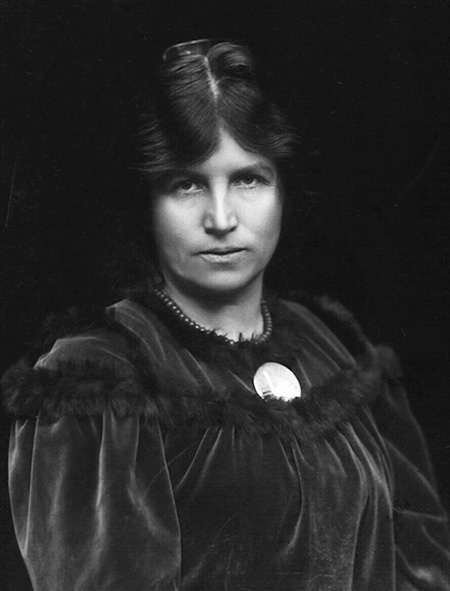Sagn og symbolisme
|
”Ellers har jeg desværre en stærk Fornemmelse af, at det er Meningen, at jeg skal kvæles langsomt i den Ligegyldighed, hvormed man Aar efter Aar undlader at tage mine Evner i Brug i store offentlige Opgaver (…) Hvad der hidtil er kommet frem er Blomster, der har vokset på Skyggesiden, aa, hvor maatte de ikke kunne blive smukke i det fulde Solskin! Runde, røde Roser!” Agnes Slott-Møller (1862-1937) har en central placering i dansk symbolisme. Hun var optaget af danmarkshistorien, sagnverdenen og folkeviserne, og det udgjorde i vid udstrækning hendes motivverden. Med riddere og jomfruer som ædle forbilleder søgte hun at skabe kunst, som skulle udtrykke fædrelandskærlighed, nationalfølelse og historisk bevidsthed, og som kunne virke som et moralsk spejl for samtiden. Inspirationen til sit symbolistiske og monumentale billedsprog fandt hun i den tidlige italienske kunst, middelalderkunsten, den engelske arts and crafts-bevægelse og hos prærafaelitterne. Som ung pige gik Agnes Slott-Møller på en lille privatskole bestyret af C.W. Eckersbergs døtre, Julie og Emilie. Hun begyndte tidligt at interessere sig for kunst og besøgte mange udstillinger. Sin kunstneriske uddannelse fik hun på Tegne- og Kunstindustriskolen for Kvinder i årene 1878-1885. Herefter modtog hun undervisning af P.S. Krøyer frem til 1886 efterfulgt af kunstneren Harald Slott-Møller. Hun giftede sig med Harald Slott-Møller i 1888, og de tog på en kombineret bryllups- og studierejse til Italien og Paris i årene 1888-1889. I sin samtid kom Agnes Slott-Møller til at spille en fremtrædende rolle på den danske kunstscene, både som maler og debattør. Sammen med sin mand var hun én af de centrale aktører bag stiftelsen af Den Frie Udstilling, der blev oprettet i 1891 som protest mod censuren på de etablerede Charlottenborg-udstillinger. |
|
|
